
Roots
The whispered secrets of hair care, passed through generations, often hold truths that modern science later affirms. Consider the nightly ritual of protecting one’s hair, a practice deeply embedded in many cultures, particularly those with textured strands. This gentle act, often involving a simple fabric cap, speaks to a profound understanding of hair’s intrinsic needs, especially its delicate relationship with hydration. At its core, hair, like a thirsty plant, requires consistent moisture to flourish.
Without this vital element, it can become brittle, prone to breakage, and lose its vibrant resilience. The journey to understanding how a bonnet contributes to hair’s nightly drink begins with a deeper acquaintance with the very architecture of a single strand.

Hair’s Delicate Framework
A single hair strand, seemingly simple, is a marvel of biological engineering. It comprises three primary layers ❉ the innermost Medulla, the robust Cortex, and the outermost Cuticle. The cuticle, a protective shield of overlapping scales, resembles shingles on a roof. In textured hair, these scales naturally tend to lift slightly due to the hair shaft’s unique elliptical shape and the coils, curls, and kinks that define its structure.
This natural lift, while contributing to the hair’s volume and distinct beauty, also presents a challenge ❉ it creates pathways through which precious moisture can escape. When the cuticle layers are raised, the hair’s ability to retain water diminishes, making it more susceptible to dryness and environmental aggressors.
Hair’s outermost layer, the cuticle, acts as a protective shield, and its integrity is paramount for moisture retention.
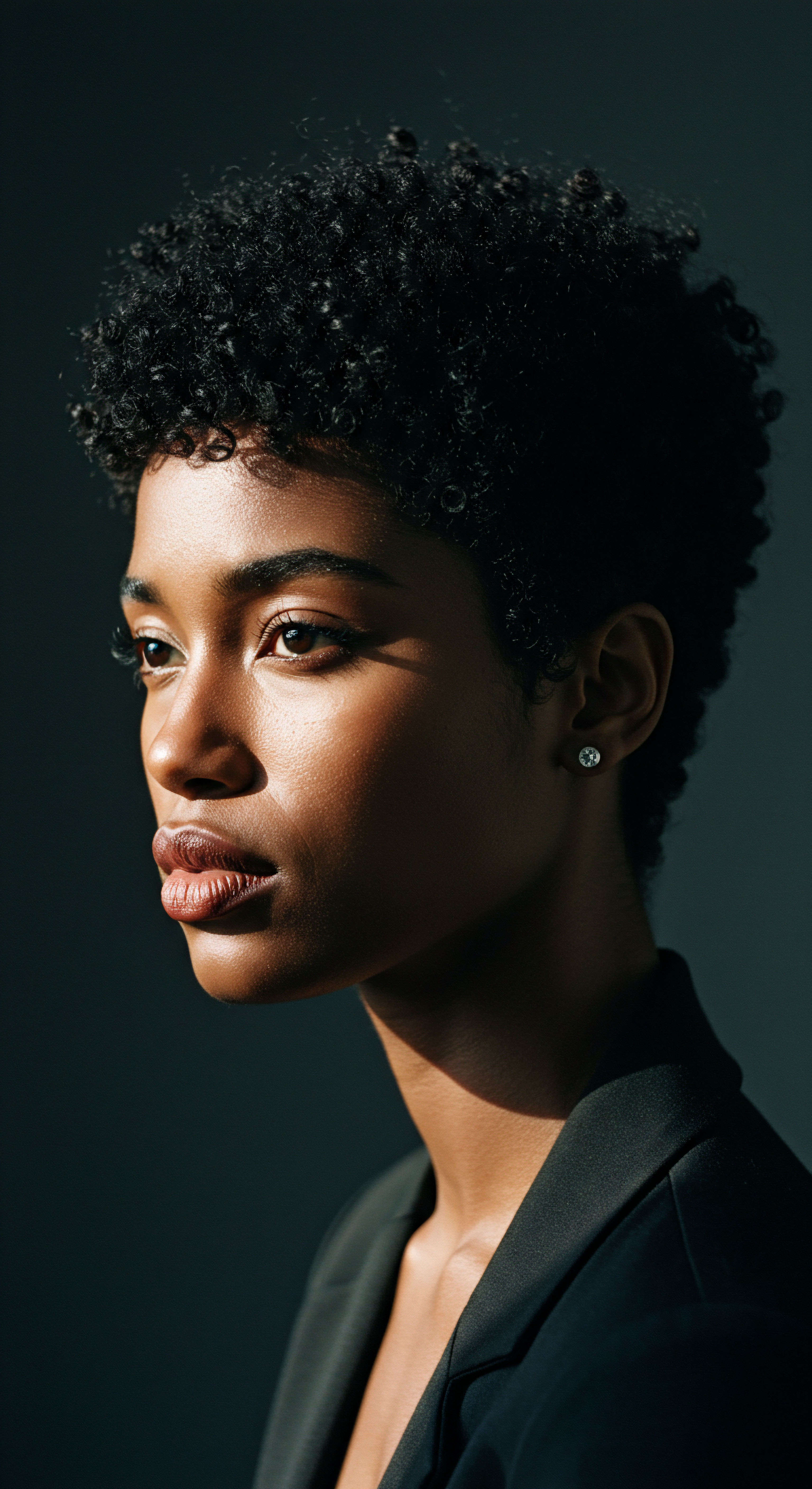
The Intricacies of Water Balance
Hydration within hair is not merely about dampness; it involves a complex interplay of water molecules bound within the cortex and the protective barrier offered by the cuticle and natural oils. The hair’s ability to draw in and hold water is influenced by its Porosity. Hair with higher porosity, often a characteristic of textured hair due to its naturally raised cuticles or damage, readily absorbs water but just as quickly releases it. This makes maintaining moisture a continuous pursuit.
During waking hours, we might apply leave-in conditioners, oils, or creams, creating an external shield. However, sleep presents a distinct set of environmental factors that can actively strip hair of its hard-won hydration.
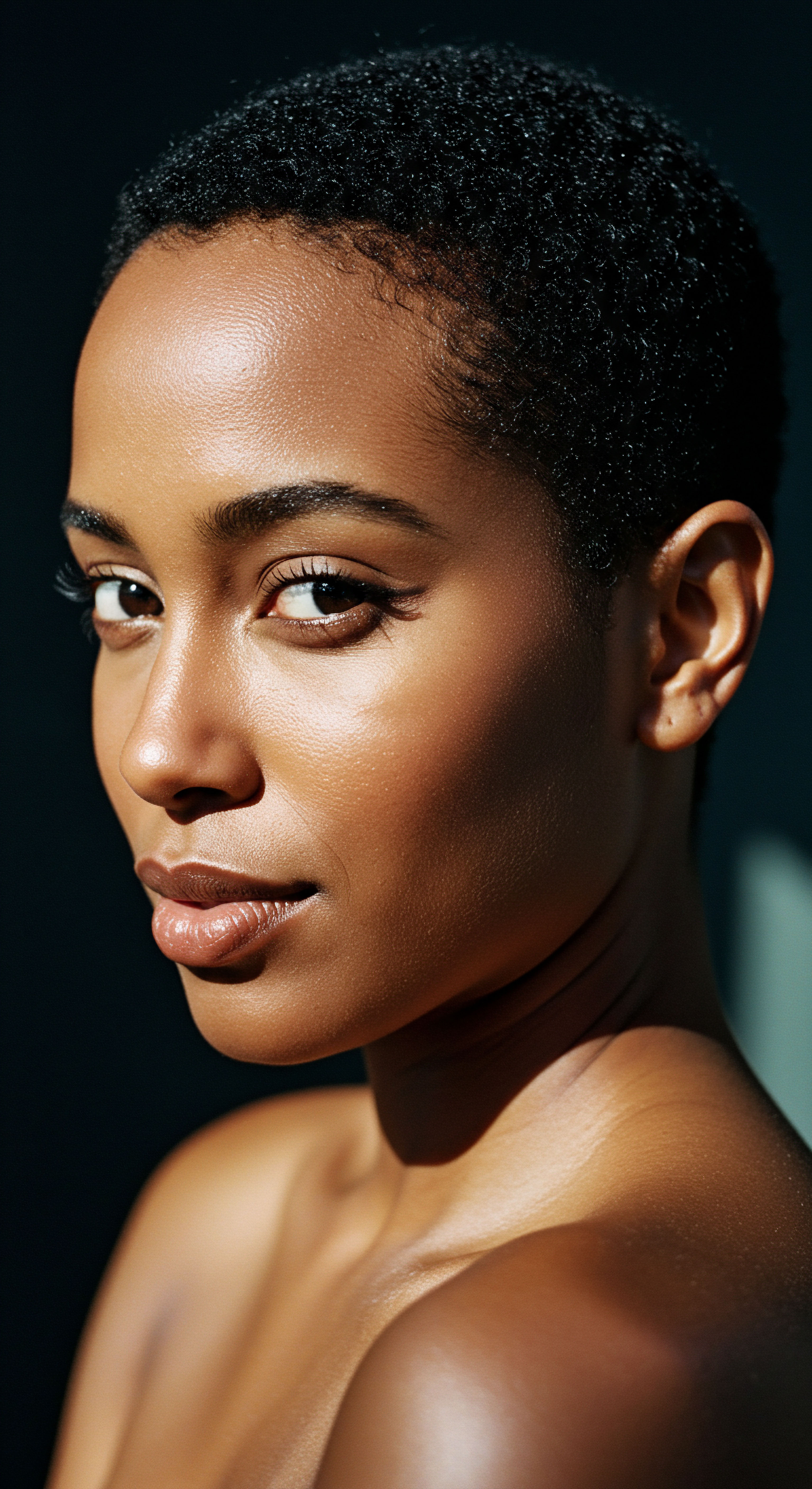
Understanding Moisture Loss Mechanisms
Nighttime moisture loss occurs through several avenues. Firstly, Evaporation is a constant process. As we sleep, the ambient air, especially in dry indoor environments, draws moisture from our hair. Secondly, Friction against bedding surfaces, such as cotton pillowcases, causes mechanical abrasion.
This friction can further lift and chip away at the delicate cuticle layers, creating more avenues for water to escape and making the hair feel rougher. Thirdly, the absorption capacity of certain fabrics can literally wick moisture away from the hair strands. A cotton pillowcase, for instance, is highly absorbent, designed to draw away sweat and oils, and unfortunately, it does not discriminate when it comes to the beneficial moisture in our hair.
Consider the daily journey of a textured strand ❉ it battles humidity shifts, styling tools, and environmental pollutants. The hours of sleep, ideally a period of rest and rejuvenation for the entire body, can inadvertently become a time of significant moisture depletion for hair. Recognizing these fundamental mechanisms of moisture loss lays the groundwork for appreciating the profound yet simple protective solution that bonnets offer. They step in as a guardian, a silent partner in the nightly quest to preserve hair’s vitality.
| Hair Layer Medulla |
| Primary Function Innermost core, sometimes absent in finer hair. |
| Hydration Relevance Limited direct role in hydration, but contributes to overall hair structure. |
| Hair Layer Cortex |
| Primary Function Central, thickest layer; contains melanin and keratin fibers. |
| Hydration Relevance Holds the majority of hair's water content; responsible for strength and elasticity. |
| Hair Layer Cuticle |
| Primary Function Outermost protective scales. |
| Hydration Relevance Regulates water absorption and retention; integrity prevents moisture loss. |
| Hair Layer Maintaining cuticle health is paramount for preserving hair's internal moisture balance. |
- Evaporation ❉ Water molecules naturally escape into the air, particularly in dry environments.
- Friction ❉ Contact with rough surfaces damages the cuticle, creating openings for moisture escape.
- Absorption ❉ Certain fabrics can draw moisture directly from the hair strands.

Ritual
Stepping beyond the elemental understanding of hair’s structure, we arrive at the practical wisdom that transforms knowledge into daily practice. The act of preparing one’s hair for sleep, particularly for those with textured strands, is more than a mere routine; it is a ritual of care, a quiet conversation with one’s self. This nighttime preparation often culminates in the donning of a bonnet, a simple yet remarkably effective tool.
It represents a conscious decision to safeguard the hair’s condition, ensuring that the efforts of the day’s conditioning and styling are not undone by the hours of repose. This section delves into the purposeful steps and considerations that make the bonnet a cornerstone of a healthy nighttime regimen.

The Bonnet’s Role in a Nightly Regimen
A bonnet functions as a personal microclimate for your hair during sleep. Its primary contribution to hydration stems from its ability to create a contained environment that minimizes moisture loss. When hair is enclosed within a smooth, non-absorbent fabric like satin or silk, the air immediately surrounding the strands becomes saturated with the hair’s natural moisture and any applied products.
This localized humidity reduces the osmotic pressure difference between the hair and the external environment, thereby slowing the rate of water evaporation from the hair shaft. It’s a subtle but significant shift, allowing the hair to retain its vital moisture content rather than relinquishing it to the ambient air.

Selecting the Proper Material
The choice of material for a bonnet is not trivial; it directly influences its effectiveness in preserving hydration. Silk and Satin are the preferred choices for textured hair protection, and for good reason. Unlike cotton, which has a porous structure and readily absorbs moisture, silk and satin possess smooth, tightly woven fibers. This characteristic means they do not wick away the natural oils and applied products from the hair.
Furthermore, their low friction coefficient minimizes mechanical stress on the hair cuticle. This gentle glide helps to keep the cuticle layers flat and undisturbed, thereby reinforcing the hair’s natural barrier against moisture loss. The smoothness also reduces tangling and knotting, which are common culprits of breakage and further cuticle damage.
The bonnet creates a protective microclimate, significantly reducing moisture evaporation and mechanical stress on hair during sleep.
Consider a study published in the Journal of Cosmetic Science which discussed the impact of surface properties on hair friction. While not directly on bonnets, the principles are clear ❉ materials with lower friction coefficients cause less damage to the hair cuticle. Silk and satin exemplify this principle, providing a gentle haven for delicate strands. This scientific understanding validates the long-held traditional wisdom surrounding these materials for hair protection.
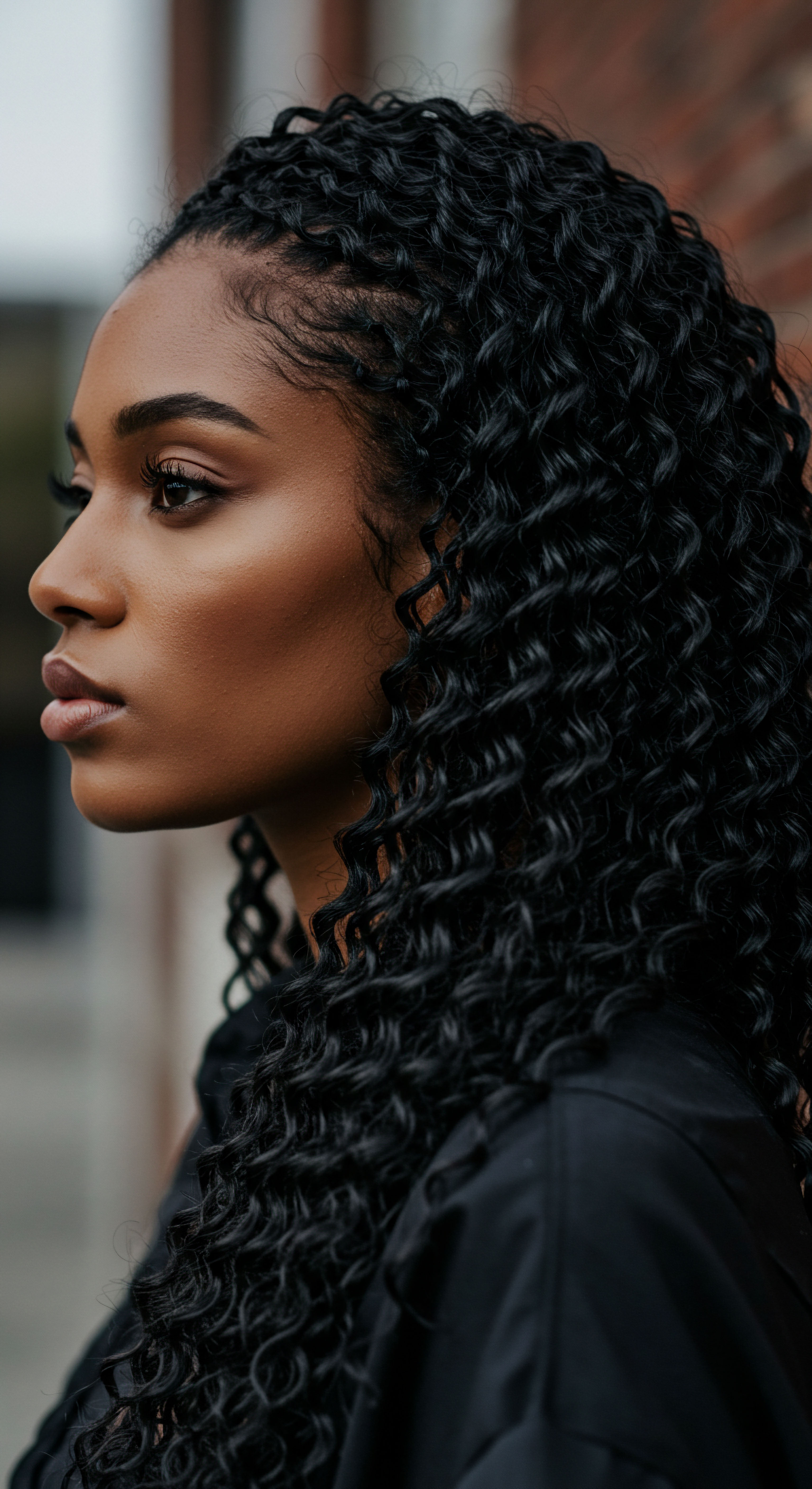
Preparing Hair for Its Nightly Sanctuary
The effectiveness of a bonnet is amplified when paired with thoughtful hair preparation. Before slipping on the bonnet, many choose to apply a leave-in conditioner, a light oil, or a moisturizing cream. These products introduce additional hydration and emollients, which the bonnet then helps to seal in. The enclosed environment allows these products to penetrate more deeply and work more efficiently throughout the night, without being absorbed by a pillowcase or lost to the air.
For textured hair, which often benefits from a consistent supply of moisture, this layering of product and protection becomes a powerful synergy. The bonnet essentially extends the active time of your conditioning treatments, turning sleep into an active period of hair nourishment.
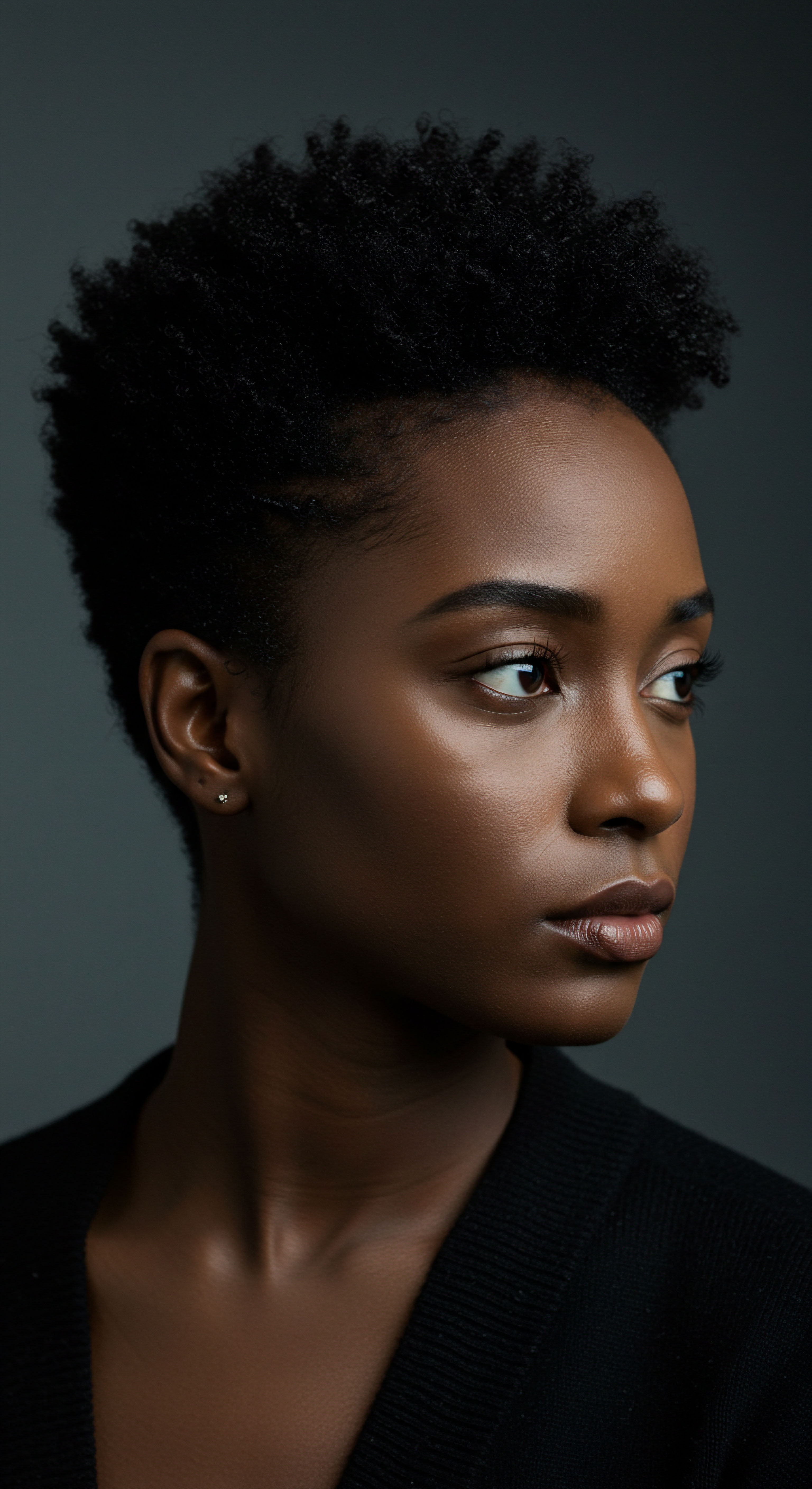
Does a Bonnet Suit All Hair Types?
While bonnets are widely celebrated within the textured hair community, their benefits extend to other hair types seeking to preserve moisture and minimize friction damage. Fine hair, for example, can also experience breakage and dryness from tossing and turning on abrasive pillowcases. A silk or satin bonnet provides a smooth surface that reduces snagging and static, contributing to healthier, less frizzy strands regardless of texture. The principle remains consistent ❉ protecting the hair from external stressors and maintaining a stable moisture environment is universally beneficial for hair health.
- Apply Products ❉ Distribute a leave-in conditioner or light oil evenly.
- Style Gently ❉ Put hair into a loose bun, braid, or pineapple for minimal tension.
- Secure Bonnet ❉ Place the bonnet carefully to cover all hair, ensuring it stays on comfortably.
| Material Silk |
| Key Characteristic Smooth, natural protein fiber. |
| Hydration Contribution Reduces friction, non-absorbent, preserves natural oils and moisture. |
| Material Satin |
| Key Characteristic Smooth, synthetic weave (often polyester). |
| Hydration Contribution Offers similar benefits to silk in terms of smoothness and low absorption. |
| Material Cotton |
| Key Characteristic Porous, absorbent fiber. |
| Hydration Contribution Wicks moisture from hair, causes friction, can lead to dryness. |
| Material Choosing silk or satin is a deliberate step towards optimal hair hydration and protection. |

Relay
How does the seemingly simple act of wearing a bonnet connect to the very resilience of textured hair, both scientifically and culturally? This query invites us into a deeper understanding, moving beyond the immediate practicalities to explore the interconnected layers of science, heritage, and well-being that underpin this nighttime ritual. The bonnet, in this context, is not merely a tool; it is a testament to adaptive care, a bridge between ancestral wisdom and contemporary trichological insights, ensuring that hair’s inherent moisture is not only preserved but celebrated.
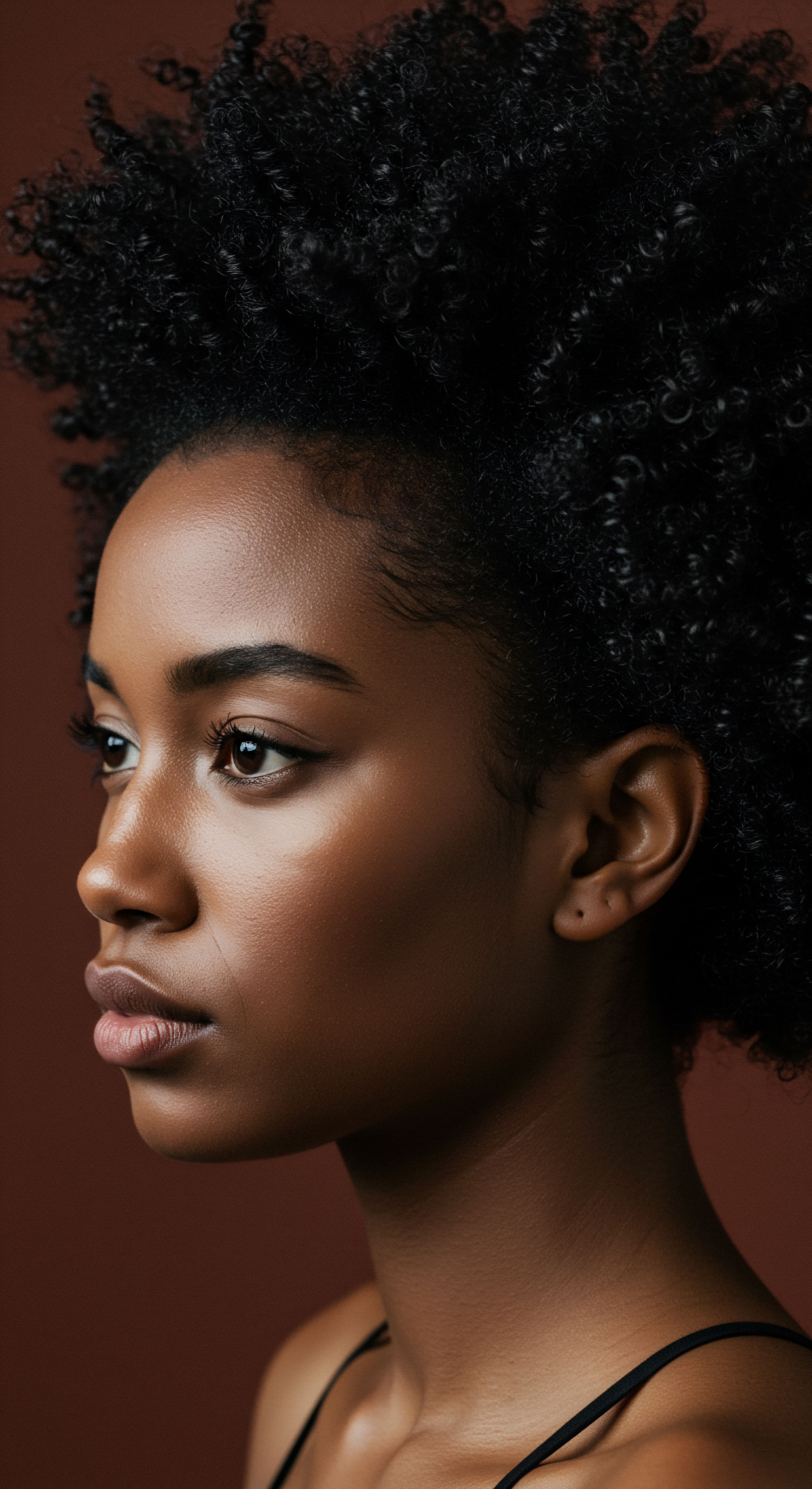
The Biophysics of Moisture Preservation
At a microscopic level, the bonnet’s contribution to hair hydration is a study in biophysics. The scalp and hair naturally release water vapor through a process known as transepidermal water loss (TEWL). This continuous evaporation is a significant factor in hair dryness, especially for textured hair which, as previously discussed, has a cuticle structure that can be more prone to moisture escape. A bonnet, particularly one made of a low-permeability fabric like silk or satin, acts as a physical barrier that significantly reduces this nightly TEWL.
By enclosing the hair, it creates a localized micro-environment with elevated humidity. This increased humidity gradient between the hair and the air inside the bonnet slows the rate at which water molecules depart from the hair shaft. The result is a substantial reduction in evaporative moisture loss, allowing the hair to maintain a more stable and higher hydration level throughout the sleep cycle.
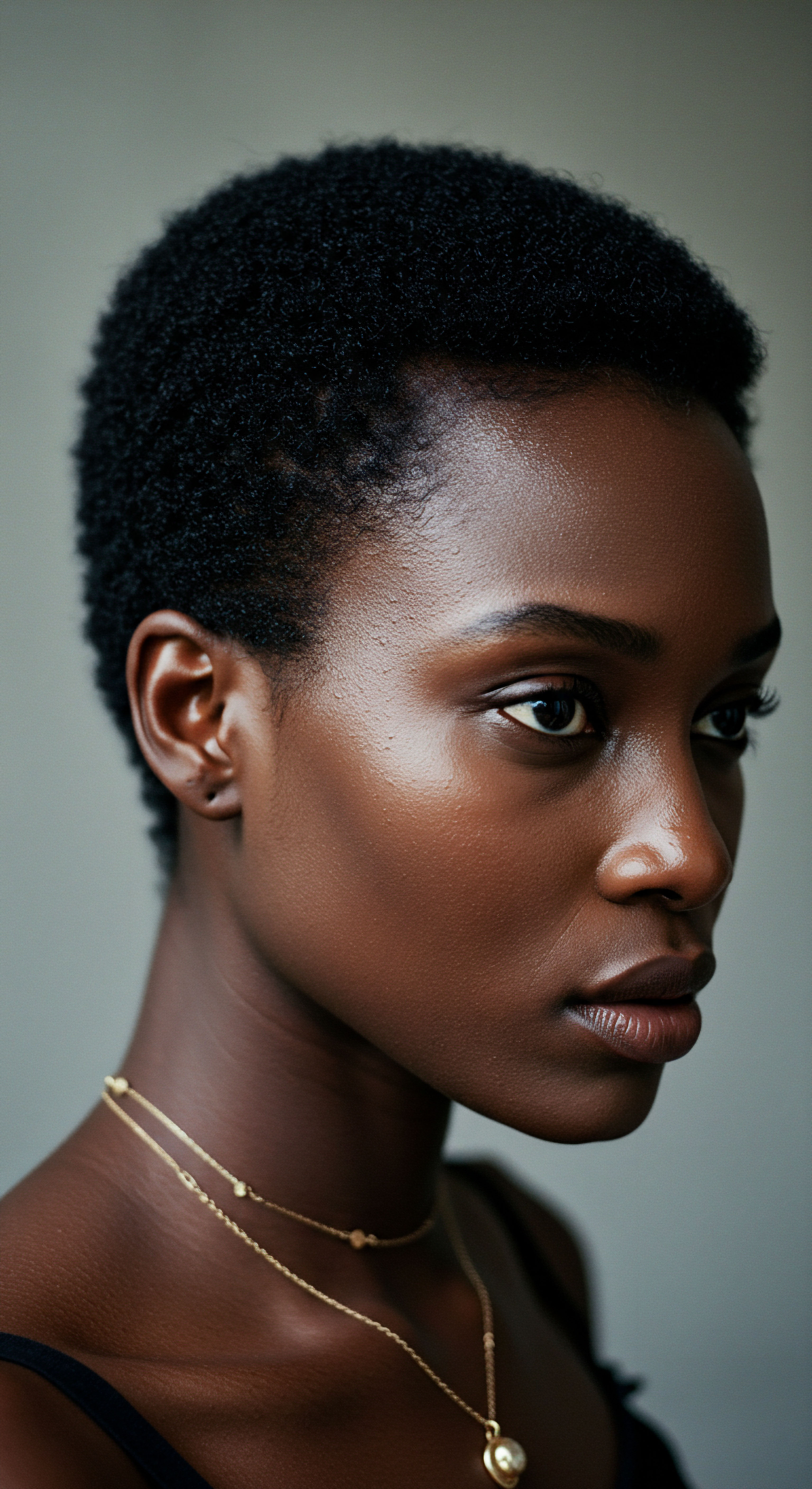
How Does a Bonnet Reduce Hair Damage During Sleep?
Beyond direct moisture retention, the bonnet’s role in minimizing mechanical damage is a critical, often overlooked, aspect of hydration preservation. Each night, as we shift and turn, our hair rubs against bedding surfaces. Common pillowcase materials, such as cotton, have a relatively rough texture at a microscopic level. This roughness creates friction, which can abrade the delicate cuticle layers of the hair shaft.
When the cuticle is lifted or damaged, it compromises the hair’s protective barrier, leading to increased porosity and, consequently, accelerated moisture loss. The smoothness of silk or satin, however, drastically reduces this friction. Hair glides effortlessly against these surfaces, minimizing snagging, tangling, and the mechanical stress that leads to cuticle damage. Less cuticle damage translates directly to better cuticle integrity, which in turn means superior moisture retention.
Bonnets function as micro-environment creators, reducing transepidermal water loss and mechanical damage to hair cuticles.
Consider research from the field of material science applied to textiles. A study examining the friction coefficients of various fabrics against human hair, for instance, might reveal that cotton exhibits a significantly higher coefficient of friction compared to silk. This quantifiable difference in friction directly correlates to the amount of mechanical stress exerted on the hair. For instance, research by S.
J. Lee and Y. J. Park in a 2011 Fibers and Polymers paper on the effect of humidity on hair properties, while not directly on bonnets, underlines how external conditions influence hair’s physical state.
The principles of reduced friction and controlled humidity provided by a bonnet are directly applicable to mitigating the negative impacts of sleep on hair health. This scientific grounding reinforces the practical wisdom of bonnet use.

A Cultural Legacy of Head Coverings
The bonnet’s presence in textured hair care is not a recent innovation; it is a continuation of a rich cultural legacy. Across various African diasporic communities, head coverings have held profound significance, serving purposes ranging from spiritual protection to social status, and certainly, practical hair preservation. Historically, scarves, wraps, and various forms of headwear protected intricate hairstyles from dust, environmental elements, and the rigors of daily life. These practices were born from necessity and observation, long before modern trichology provided scientific explanations.
The bonnet, in its contemporary form, is a direct descendant of these traditions, adapting ancient wisdom to modern needs. It speaks to a collective understanding of hair as a crown, a vital part of identity that warrants dedicated care and protection. This cultural continuity lends a profound depth to the simple act of donning a bonnet, transforming it into a ritual that connects individuals to a broader heritage of self-care and preservation.
The bonnet carries a deep cultural resonance, connecting modern hair care to ancestral traditions of protection and identity.
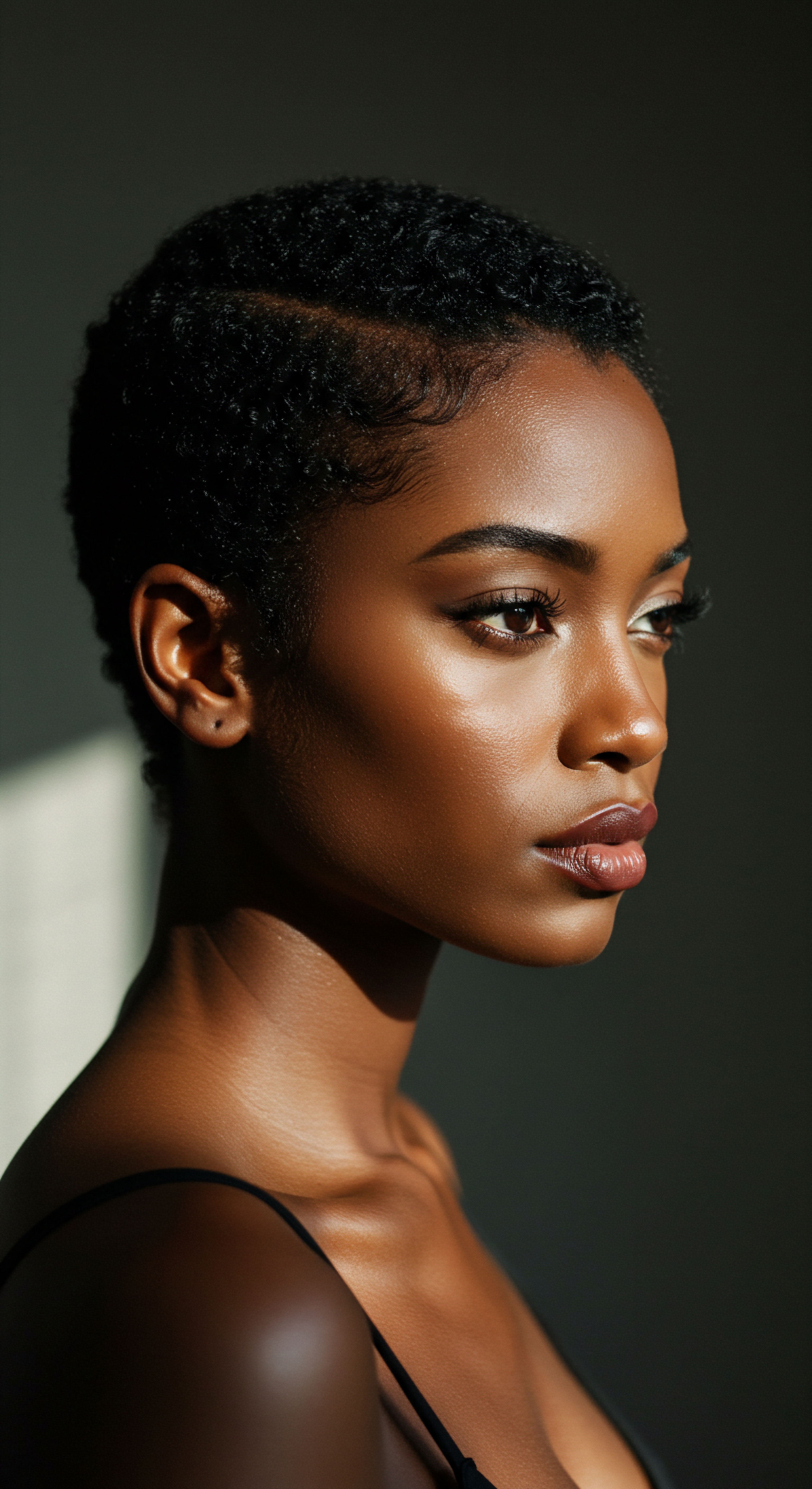
What Does a Bonnet Do to Hair Overnight?
Overnight, a bonnet creates an optimal environment for hair recovery and moisture balance. By reducing friction against bedding, it prevents the physical wear and tear that can lead to split ends and breakage. This means less cuticle disruption, which directly supports the hair’s ability to hold onto moisture. Furthermore, the enclosed space helps to maintain a consistent temperature and humidity level around the hair, preventing rapid fluctuations that can cause hair to dry out or become frizzy.
For those who apply leave-in treatments or oils before bed, the bonnet ensures these products remain on the hair, working their magic, rather than being absorbed by a cotton pillowcase. This cumulative effect of reduced damage and sustained hydration contributes significantly to the overall health, softness, and sheen of textured hair over time.
- Reduced Evaporation ❉ Creates a humid microclimate, slowing water loss from hair.
- Minimized Friction ❉ Smooth material prevents cuticle damage and breakage.
- Product Retention ❉ Keeps applied conditioners and oils on hair, not absorbed by bedding.
- Temperature Regulation ❉ Helps maintain consistent hair temperature, preventing excessive drying.
| Protection Method Satin/Silk Bonnet |
| Mechanism of Hydration Reduces TEWL, minimizes friction, retains applied products. |
| Impact on Hair Maintains moisture, reduces breakage, preserves style. |
| Protection Method Cotton Pillowcase |
| Mechanism of Hydration Absorbs moisture, creates friction. |
| Impact on Hair Leads to dryness, frizz, cuticle damage, breakage. |
| Protection Method Loose Braids/Twists (no covering) |
| Mechanism of Hydration Minimizes tangling, but still exposed to air and friction. |
| Impact on Hair Better than loose hair, but less effective for hydration than a bonnet. |
| Protection Method The bonnet stands as a superior method for preserving hair hydration and integrity during sleep. |

Reflection
The journey through the intricate world of hair hydration, from the microscopic dance of cuticles to the quiet power of a nightly bonnet, reveals a truth both scientific and deeply human. It speaks to the inherent wisdom of practices passed down, now illuminated by the lens of modern understanding. The bonnet, in its quiet efficacy, stands as a symbol of gentle self-care, a small act with profound implications for the health and vitality of textured hair.
It is a reminder that the most potent solutions often lie in harmonizing with our body’s natural rhythms and respecting the delicate balance of its elements. As we continue to seek ways to honor and nourish our strands, the humble bonnet offers a testament to enduring care, a whisper of heritage, and a promise of vibrant mornings.

References
- Robbins, C. R. (2012). Chemical and Physical Behavior of Human Hair. Springer Science & Business Media.
- Gavazzoni Dias, M. F. R. (2015). Hair Cosmetics ❉ An Overview. International Journal of Trichology, 7(1), 2–15.
- McMichael, A. J. (2013). Hair and Scalp Diseases ❉ Medical, Surgical, and Cosmetic Treatments. CRC Press.
- Khadi, A. (2017). The Science of Hair Care. Academic Press.
- Barel, A. O. Paye, M. & Maibach, H. I. (Eds.). (2014). Handbook of Cosmetic Science and Technology (4th ed.). CRC Press.
- de Almeida, K. R. C. G. & de Almeida, R. C. R. G. (2018). Hair surface properties as influenced by cosmetic treatments. Journal of Cosmetic Dermatology, 17(3), 365-371.
- Lee, S. J. & Park, Y. J. (2011). The effect of humidity on the physical properties of human hair. Fibers and Polymers, 12(4), 552-557.